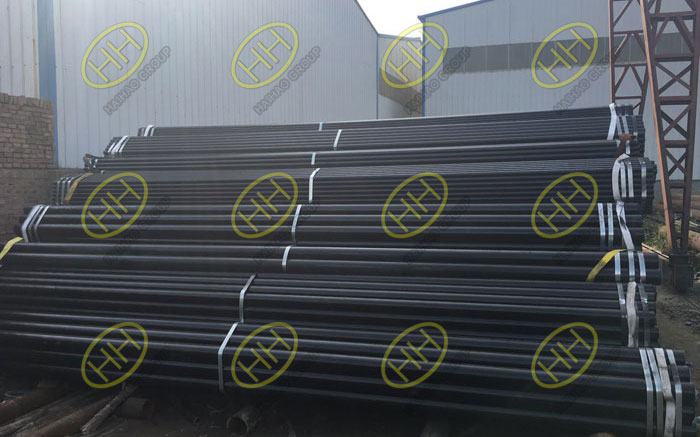Which is better, ‘cold rolling’ or ‘hot rolling’?
Hot rolling and cold rolling are both steel plate or profile forming processes, and they have a great influence on the structure and properties of steel. The rolling of steel is mainly hot rolling, and cold rolling is only used to produce small section steel and thin plates.
By definition, steel ingots or billets are difficult to deform at room temperature and are not easy to process. Generally, they are heated to 1100-1250 ° C for rolling. This rolling process is called hot rolling. The termination temperature of hot rolling is generally 800 ~ 900 ℃, and then generally cooled in the air, so the hot rolling state is equivalent to normalizing treatment. Most steel products are rolled by hot rolling.
Due to the high temperature, the steel delivered in the hot-rolled state has a layer of iron oxide on the surface, which has a certain corrosion resistance and can be stored in the open air. However, this layer of iron oxide also makes the surface of hot-rolled steel rough, and the size fluctuates greatly. Therefore, steel with smooth surface, accurate size and good mechanical properties is required. Cold-rolled semi-finished products or finished products are used as raw materials.
Cold rolling refers to a rolling method in which the steel is squeezed with the pressure of a roller at normal temperature to change the shape of the steel. Although the processing process will also increase the temperature of the steel plate, it is still called cold rolling.
Specifically, the hot-rolled steel coil for cold rolling is used as a raw material, and the oxide scale is removed by pickling and then subjected to pressure processing, and the finished product is a hard-rolled coil. The surface of the cold-rolled sheet has a certain smoothness, and it is relatively smooth to the touch, mainly due to the pickling.
The change of the shape of the steel by cold rolling belongs to continuous cold deformation. The cold work hardening caused by this process causes the strength and hardness of the rolled hard coil to increase, and the toughness plastic index to decrease. For end use, cold rolling deteriorates the stamping performance, and the product is suitable for simple deformed parts.
The advantages and disadvantages of hot rolling:
Advantages:
It can destroy the casting structure of the steel ingot, refine the grains of the steel, and eliminate the defects of the microstructure, so that the steel structure is compact and the mechanical properties are improved. This improvement is mainly reflected in the rolling direction, so that the steel is no longer isotropic to a certain extent; the bubbles, cracks and looseness formed during casting can also be welded under the action of high temperature and pressure.
Disadvantages:
1.After hot rolling, non-metallic inclusions (mainly sulfides and oxides, as well as silicates) inside the steel are pressed into thin slices and delamination (interlayer) occurs. The delamination greatly deteriorates the tensile properties of the steel in the thickness direction, and there may be interlayer tearing when the weld shrinks. The local strain induced by the shrinkage of the weld often reaches several times the yield point strain, which is much larger than the strain caused by the load;
2.Residual stress caused by uneven cooling. Residual stress is the stress of internal self-phase balance without external force. Hot-rolled steel sections of various cross sections have this type of residual stress. The larger the section size of the general steel section, the greater the residual stress. Although the residual stress is self-balanced, it still has a certain influence on the performance of the steel member under the action of external forces. Such as deformation, stability, fatigue resistance, etc. may have adverse effects.
The advantages and disadvantages of cold rolling
Advantages: fast forming speed, high yield, and without damaging the coating, can be made into a variety of cross-sectional forms to meet the needs of the use conditions; cold rolling can cause a large plastic deformation of the steel, thereby improving the yield of the steel point.
Disadvantages:
1.Although there is no hot plastic compression during the forming process, there are still residual stresses in the cross section, which will inevitably have an impact on the overall and local buckling characteristics of the steel;
2.The style of cold-rolled steel is generally an open section, which makes the free torsional rigidity of the section lower. Torsion is easy to occur when bending, bending and torsion buckling is easy to occur under compression, and the torsion resistance is poor;
3.The wall thickness of cold-rolled steel is small, and there is no thickening at the corners where the plates are joined, and the ability to withstand localized concentrated loads is weak.
The difference between cold rolling and hot rolling:
1.The cold-rolled steel allows local buckling of the section, so that the load-bearing capacity of the member can be fully utilized; hot-rolled steel does not allow local buckling of the section. edit
2.The causes of the residual stress of hot-rolled steel and cold-rolled steel are different, so the distribution on the cross section is also very different. The distribution of residual stress on the section of cold-formed thin-walled steel is curved, while the distribution of residual stress on the section of hot-rolled steel or welded steel is thin-film.
3.The free torsional rigidity of hot-rolled steel is higher than that of cold-rolled steel, so the torsion resistance of hot-rolled steel is better than that of cold-rolled steel
Summary: The difference between cold rolling and hot rolling is mainly the temperature of the rolling process. “Cold” is normal temperature, “Hot” is high temperature. From the perspective of metallurgy, the boundary between cold rolling and hot rolling should be distinguished by recrystallization temperature. That is, rolling below the recrystallization temperature is cold rolling, and rolling above the recrystallization temperature is hot rolling. The recrystallization temperature of steel is 450-600 ° C.

